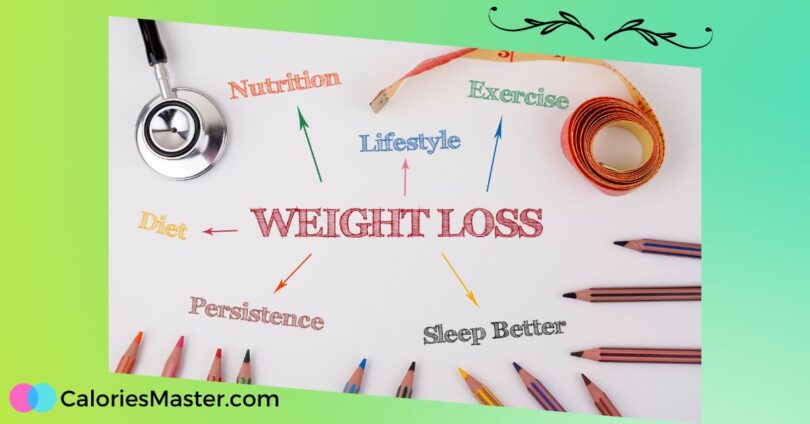Losing weight can be a challenging journey, but it is not impossible. Many people struggle with losing weight, especially when it comes to losing fat. However, if you are determined and committed, losing 15 pounds of fat in 3 months or less is achievable.
To start your weight loss journey, it is important to understand the basics of weight loss. Losing weight requires burning more calories than you consume. This means that you need to create a calorie deficit by reducing your calorie intake and increasing your physical activity.
There are many ways to create a calorie deficit, including following a healthy diet and engaging in regular exercise. However, it is important to note that crash diets or extreme exercise plans are not sustainable and can be harmful to your health.
The key to successful weight loss is to make small, sustainable changes to your lifestyle that you can maintain in the long run.
Understanding Weight Loss
lets Understand it :
Calories and Deficit
Losing weight is all about creating a calorie deficit. This means consuming fewer calories than your body burns each day.
To lose 15 pounds of fat in 3 months, you need to create a deficit of around 500 calories per day. This can be achieved through a combination of diet and exercise.
When it comes to weight loss, not all calories are created equal. Eating a diet high in processed foods and sugar can lead to weight gain, while a diet rich in whole foods can help you lose weight and improve your health.
It’s important to note that creating too large of a calorie deficit can be counterproductive. Your body may go into starvation mode, slowing down your metabolism and making it harder to lose weight.
It’s recommended to aim for a gradual and sustainable weight loss of 1-2 pounds per week.
Macronutrients and Metabolism
Macronutrients, or “macros” for short, refer to the three main nutrients in our diet: protein, carbohydrates, and fat. Each macro plays a different role in our body and can impact weight loss.
Protein is important for building and repairing muscle, which can help increase metabolism and burn more calories. Carbohydrates provide energy for our body, but consuming too many refined carbs can lead to weight gain.
Healthy fats, such as those found in nuts and avocados, can help keep you feeling full and satisfied.
In addition to macros, metabolism also plays a role in weight loss. Metabolism refers to the process of converting food into energy. A faster metabolism can help you burn more calories throughout the day. Factors that can impact metabolism include genetics, age, and muscle mass.
By understanding the role of calories, macros, and metabolism in weight loss, you can create a sustainable plan to lose 15 pounds of fat in 3 months or less.
Effective Diet Strategies
lets discuss this :
Meal Planning
Meal planning is an essential part of an effective diet strategy. It helps to ensure that you are consuming the right amount of nutrients and calories for your body.
A balanced diet should include a variety of foods from all food groups, including fruits, vegetables, whole grains, lean protein, and healthy fats.
To make meal planning easier, consider creating a weekly meal plan. This can help you to stay on track and avoid impulsive food choices.
You can also use a food diary to track your food intake and ensure that you are meeting your nutritional needs.
Intermittent Fasting
Intermittent fasting is a popular diet strategy that involves alternating periods of fasting and eating. This can help to promote weight loss by reducing calorie intake and increasing fat burning.
There are several different types of intermittent fasting, including the 16/8 method, where you fast for 16 hours and eat during an 8-hour window, and the 5:2 method, where you eat normally for 5 days and restrict calories to 500-600 for 2 days.
It is important to note that intermittent fasting may not be suitable for everyone, especially those with certain medical conditions. It is recommended to consult with a healthcare professional before starting any new diet plan.
Sustainable Food Choices
Making sustainable food choices is an important part of any effective diet strategy. This involves choosing foods that are not only good for your body but also good for the environment.
Some examples of sustainable food choices include choosing locally grown produce, reducing meat consumption, and avoiding processed foods. These choices can help to reduce your carbon footprint and promote a healthier planet.
In conclusion, effective diet strategies involve meal planning, intermittent fasting, and sustainable food choices. By incorporating these strategies into your lifestyle, you can achieve your weight loss goals in a healthy and sustainable way.
Exercise for Fat Loss
lets Explore the exercises for fat loss:
Cardiovascular Training
Cardiovascular training is an effective way to burn calories and lose fat. It involves activities that increase the heart rate and breathing rate, such as running, cycling, swimming, or brisk walking.
To achieve fat loss, it is recommended to perform cardio exercises for at least 30 minutes, 3-5 times a week.
One way to make cardio training more effective is to incorporate high-intensity interval training (HIIT).
This involves alternating between periods of high-intensity exercise and periods of rest or low-intensity exercise. HIIT has been shown to be more effective than steady-state cardio for fat loss.
Resistance Training
Resistance training, also known as weight training or strength training, is an important component of a fat loss exercise program.
Resistance training helps to build lean muscle mass, which increases metabolism and burns calories even at rest. It also helps to prevent muscle loss during weight loss.
To achieve fat loss, it is recommended to perform resistance training exercises for all major muscle groups, such as squats, lunges, push-ups, and rows.
It is important to gradually increase the weight and intensity of the exercises over time to continue to challenge the muscles and promote fat loss.
Consistency and Progression
Consistency and progression are key to achieving fat loss through exercise. It is important to stick to a regular exercise routine and gradually increase the intensity and duration of the exercises over time. This helps to prevent plateaus and ensure continued progress towards fat loss goals.
It is also important to vary the exercises to prevent boredom and challenge the muscles in different ways.
This can be achieved by trying new exercises, using different equipment, or changing the order or intensity of the exercises.
Overall, a combination of cardiovascular and resistance training, performed consistently and progressively, is an effective way to achieve fat loss.
It is important to consult a qualified fitness professional to design a safe and effective exercise program tailored to individual needs and goals.
Monitoring Progress and Adjustments
lets dicuss this :
Tracking Weight and Body Composition
To monitor progress towards the goal of losing 15 pounds of fat in 3 months or less, it is important to track weight and body composition regularly. This can be done using a scale and body fat measuring tools such as calipers or a bioelectrical impedance device.
It is recommended to weigh oneself once a week, at the same time of day and under the same conditions, such as after waking up and using the bathroom. Tracking body composition can be done less frequently, such as once a month.
Keeping a record of the measurements in a table or graph can help visualise progress and identify any plateaus or setbacks.
It is important to note that weight can fluctuate due to factors such as water retention, so it is important to focus on the trend over time rather than day-to-day changes.
Adjusting Diet and Exercise
If progress towards the goal is not being made, adjustments to the diet and exercise plan may be necessary. This can involve reducing calorie intake, increasing physical activity, or a combination of both.
It is important to make gradual changes to avoid drastic calorie deficits or overexertion, which can lead to negative health consequences.
Small adjustments, such as reducing portion sizes or increasing the duration or intensity of exercise, can be made every few weeks.
It is also important to listen to the body and make adjustments as needed. If a particular exercise is causing pain or discomfort, it may be necessary to switch to a different exercise or modify the technique.
Similarly, if a particular food is causing digestive issues or cravings, it may be necessary to eliminate or reduce it from the diet.
By regularly monitoring progress and making adjustments as needed, it is possible to reach the goal of losing 15 pounds of fat in 3 months or less in a safe and sustainable manner.









